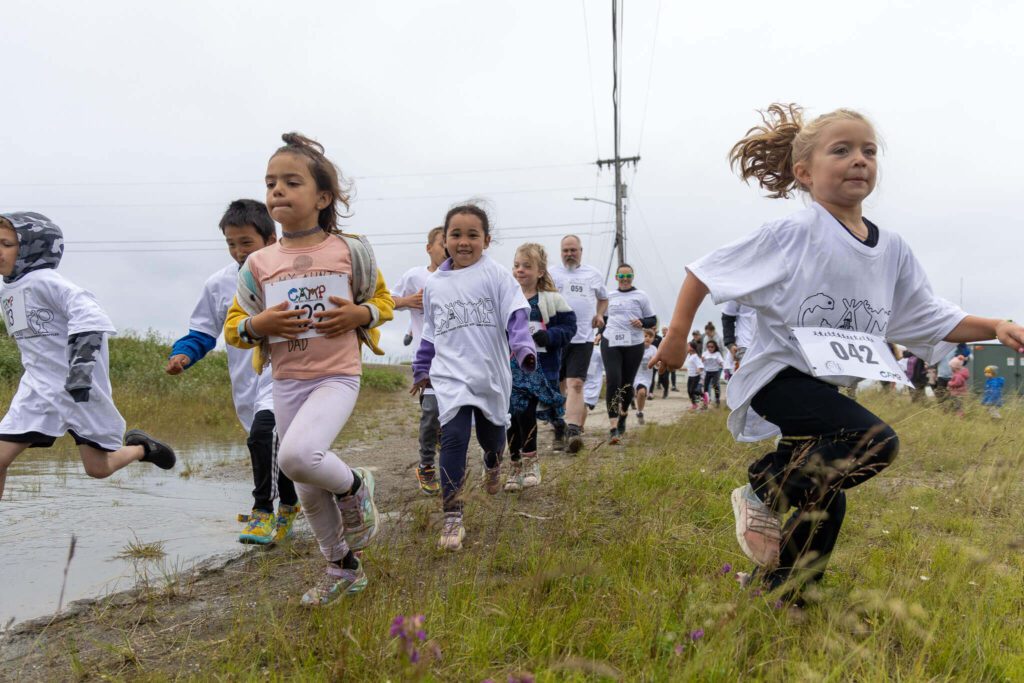Competition is hardly confined to the front as Iditarod teams sprint along the coast. In Unalakleet, mushers were hoping to hop, skip, and leap-frog their teams toward the top ten.
Kelly Maixner looks over his sleepy sled-dogs as they nap on small bushels of straw. But, he says, to those who know how to read the signs, these are not tired dogs.
“They’re moving around a little bit, see: that one was looking at me, that one’s moving. If they were really tired you wouldn’t be able to move them at all. Ya know, just like us when we’re really tired and our mom tries to get us out of bed, we’re like, ‘rrrrrrh.’ And they’ll be a little bit grouchy when they get out of bed, that’s always how they are.”
Like a lot of mushers moving up the coast, Maixner’s strategies, plans, and timelines were left back on the river.
“I don’t have a specific schedule. Basically, right now, it’s what can the dogs do.”
Maixner was 21st into Unalakleet, but he says a top ten finish isn’t totally out of the question. He’s done well along the coast before and budgeted his dogs for a hard push past competitors further ahead. In his analysis, part of what’s making this such a fast, tightly clustered race is how cooperative the weather and trail conditions have been. And neither of those variables are a given along the notoriously temperamental coast.
“Usually, about this time is when you start seeing people really start to fall back. But you can get away with a lot more when you don’t have any resistance to fight. So that’s probably one of the reasons everything is so close. I mean, it’s gonna be a crowded party at White Mountain. I’d better go get there.”

After more than 700 miles, strategy is a bit of a luxury. Watering his dogs after a few hours rest, Aniak musher Richie Diehl says his progress is at the whims of a bug.
“They just got this virus that’s been going around, everybody else has gotten, now we’re getting it later on in the race. But that’s part of the deal.”
His priority at this point isn’t any particular number in the standings; it’s getting his dogs another 261 miles to Nome.
“I kinda gotta keep an eye on the ones that are a little sick and see how they do. I think if I push them any harder, then it could have a snowball effect and have some issues. I just have to run my dogs and see how they’re doing. That’s all I’m gonna do.”
A few yards away, Travis Beals is trying to entice his dogs out of their nap by tossing frozen pieces of fat.
“We’re just gonna call this one an expensive vacation.”
Beals was expecting to top his 11th place finish from last year. But at 23rd into Unalakleet, he’s pessimistic. Right as he’s describing his disappointment, Kelly Maixner — booyting his dogs a few feet away — cuts him off.
“You’re not in bad shape right now. It looks like, but you’re not. I told you that two days ago. I mean you’re only—how many hours out?”
Beals, who jumped six spots between Unalakleet and Nome last year, takes the point. He’s not sure how much reserve his team has, or what his run-rest plan is for the remaining trail. But nonetheless, he’s ready to go.








